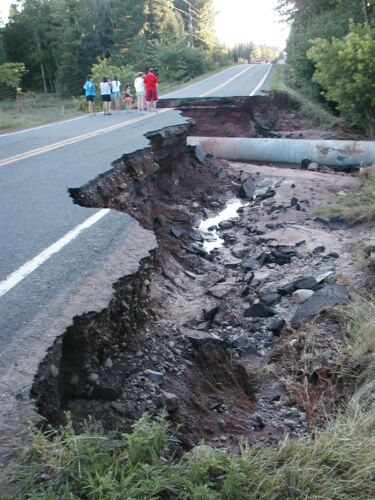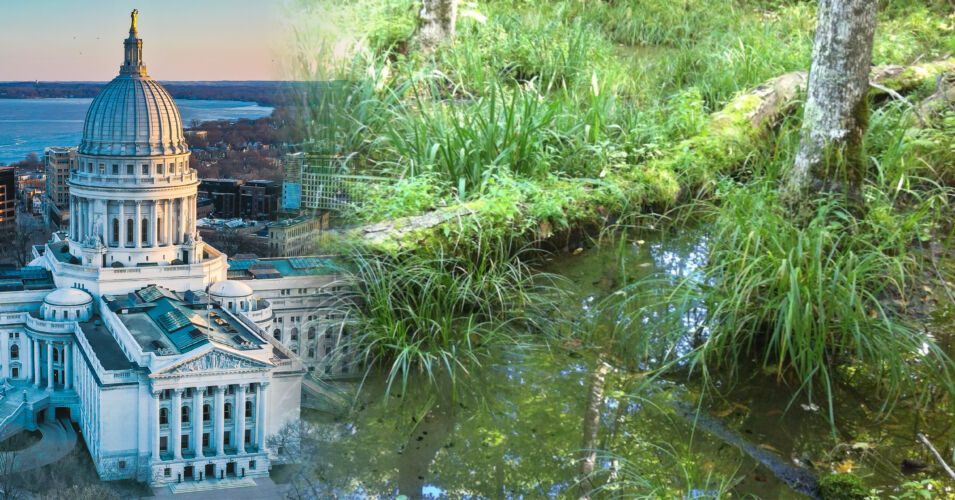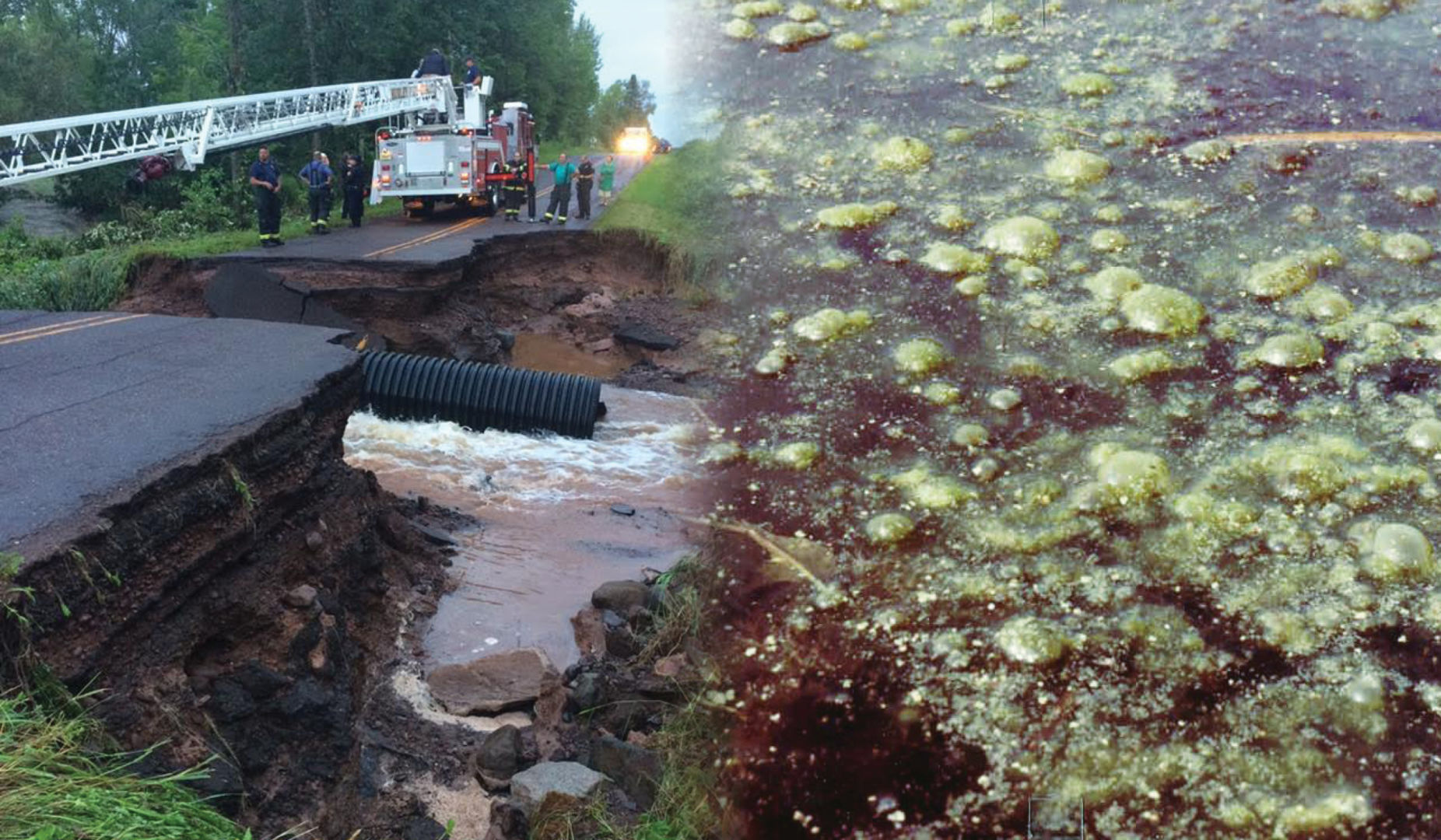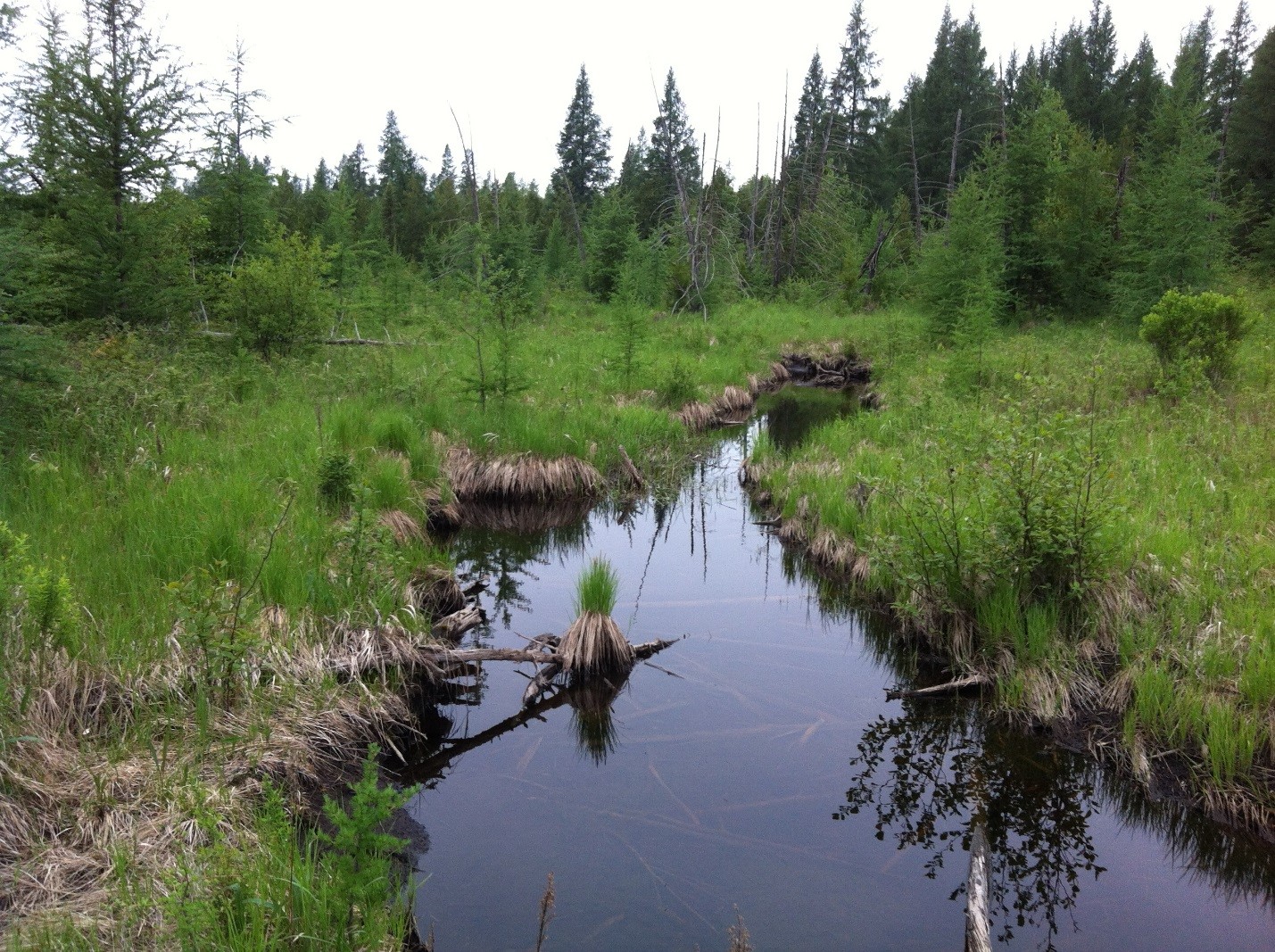Last legislative session, Representative Loren Oldenburg (Viroqua) convened a small group of agencies and organizations, including Wisconsin Wetlands Association (WWA), to help him identify ways to assist rural, floodprone communities in his district and elsewhere that struggle with repetitive flood damage caused by erosion, saying “Bring me your policy ideas.”
In February 2022, WWA submitted a memo outlining a menu of options informed by our flood resilience work in the Lake Superior basin. Eighteen months and many meetings later, legislation based on one of our key recommendations is under consideration in the state capitol.
Assembly Bill (AB) 222 (and identical companion legislation Senate Bill (SB) 222) creates a Pre-Disaster Flood Resilience Grant Program to be administered by Wisconsin Emergency Management.
The authors—Representative Oldenburg and Senator Quinn (Cameron)—both represent areas recently and routinely impacted by intense storms and flood damages. WWA worked closely with the authors, Wisconsin Towns Association, and Trout Unlimited to develop this proposed grant program that provides two different tiers of support for flood-prone communities.
- An assessment grant (capped at $300,000 per project) helps local governments get the data needed to assess flood vulnerabilities within a project area. Examples of eligible activities include location and condition of culverts, hydrologic and hydraulic modeling that indicates how and where flood flows are moving, and upstream condition assessments of erosion hazards. The information gathered through an assessment grant will help local governments understand current conditions, which is always the first step to considering strategies for improvements.
- An implementation grant (capped at $250,000 per project) focuses on hydrologic restoration that can reduce flood damages and protect roads and other infrastructure. Healthy conditions in upstream wetlands, streams, and floodplains offer stable flood storage and opportunities to slow the energy of flood flows. Erosion into wetlands and along streams has the opposite effect, leading to rapid and flashy flooding downstream. The projects enabled through an implementation grant will restore the landscape’s natural ability to store, infiltrate, and slowly release runoff. We call this approach “natural flood management.”

Ashland County is one area of Wisconsin that has experienced intense storms and flood damages in recent years. It was the first area where we focused on demonstrating how investing in wetland restoration can reduce flood damage like that pictured here.
Flooding has truly wide-ranging impacts! As such, AB and SB 222 have garnered 28 bipartisan legislative cosponsors from all corners of the state. Additionally, organizations representing emergency responders, farmers, conservation advocates, land information experts, engineering consultants, and local government groups have registered their support.
The advocacy of WWA members helped give this legislation the strong introduction it deserves: thank you! If you haven’t yet but would like to share your support with your elected officials, key points to emphasize are that this legislation:
- Recognizes wetland and floodplain restoration as a critical, cost-effective, and underutilized flood-risk reduction strategy that provides many other co-benefits.
- Breaks the cycle of post-disaster response and empowers flood-prone communities to address flood vulnerabilities before flooding events occur.
- Builds knowledge and accountability so lessons learned from funded projects can be used to improve flood risk reduction strategies in other communities.
While AB and SB 222 will establish the program from a policy perspective, the funding to administer the first twoyears of the program will be requested in the 2023-25 state budget.
The genesis and progress of this legislation shows how WWA works in sequence to evaluate a problem, identify solutions, and work with policymakers, agencies, and local leaders to put wetlands to work to solve those problems. Stay tuned for future updates on WWA’s policy agenda!
Related content
Wisconsin partners applaud action to fund Pre-Disaster Flood Resilience Grants
2023-2024 Policy Priorities
Learn about other policy priorities WWA has set for this legislative cycle.
Our legacy of wetland loss: Behind our water problems





